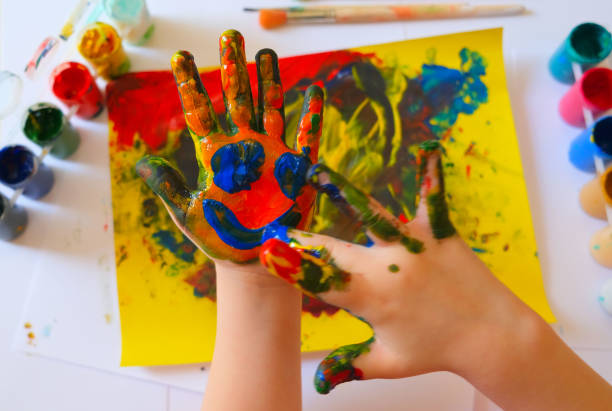Sensory Development in Preschool Education
Today, in preschool education, children are offered many opportunities to support learning with their senses. Playing with sand and water is an opportunity for the child to develop his/her sense of touch, musical activities to develop his/her sense of hearing, colorful art works and colorful toys to develop his/her sense of sight, and the different snacks offered in between meals to develop his/her sense of taste. Beyond these common applications, the Montessori method brings a systematic approach to sensory development. The applications in this program and the materials used in these applications have been designed considering the fact that learning depends on the flow of information provided by the senses in the natural development process.
Montessori sensory studies enable the child to correctly perceive and describe the characteristics of the stimuli around him, and to determine the differences between the stimuli. The aim of the studies is to develop the ability to distinguish even the smallest differences between these features. Maria Montessori saw that studies targeting only the five basic senses would not be sufficient for a refined perception system, and she also aimed to develop the senses that use the basic senses together or form the subgroups of these senses.
The mental work required by the process of visualizing the information received by touch greatly contributes to the development of the child’s mental skills.
It is very important to give your child an environment where the stimuli necessary for sensory development are presented and the opportunity to experience these stimuli. With a natural curiosity, your child will be directed to the stimuli around him, he will want to touch these stimuli, take them into his mouth, shake them and throw them on the ground. Allowing your child to satisfy this curiosity in any situation that does not pose a danger to your child will support his development in a positive way. Children may feel the need to do the same thing over and over to refine their senses.
Sensory development enables the child to observe his environment better, to perceive the information presented by the environment correctly, to notice the details and to use all this information effectively in his mental processes. Every activity that supports sensory development also supports the child’s memory, attention and concentration skills and forms the infrastructure of many mental skills that he will need throughout his life.
Let’s share some examples that you can do at home to support your children’s sensory development:
You can put different fabrics/textures in a bag to improve the sense of touch. For example, suppose one is a silky texture; the other is velvet, one is tulle, one is a fabric with a hardness close to sandpaper. Add a piece of sponge too. Stuff all this in a fabric bag. Prepare another one from the same set and put it in a second bag. If possible, the dimensions of the fabrics should be similar. First, take one of the fabric sets one by one and examine them carefully. Show your child how you are trying to feel by touch. You can talk and tell what these differences are. This is a thick but soft fabric; this fabric is so hard it hurts my hand; this fabric is very light and slippery etc. Then show your child both sets and allow them to examine the fabrics. Touch, feel, observe the differences. First, let him choose a fabric from the first bag; let him examine; let him feel Then move on to the second bag and try to find the same fabric by feeling. This is a very nice work that children do with great pleasure and focus on their feelings. Then you can play similar games with different materials (such as wood, glass, steel) and sandpaper of different textures. When your child is proficient in this type of matching, you can gently tie your child’s eyes with a silk scarf and ask him to do the matching, this time only by feeling, without seeing.
For the sense of taste, for example, you can put salt, sugar, lemon water in dark colored bottles with droppers. Make another one from the same set. Then ask your child to taste one of the bottles and pair it with the same flavor in the other set. This and similar studies bring different senses to the fore and enable children to focus on that work and to concentrate on these senses by minimizing external factors. You can see many examples of similar activities in our Kidokit application, accompanied by videos. You or your caregiver can contribute to sensory development by doing these activities with your children.
